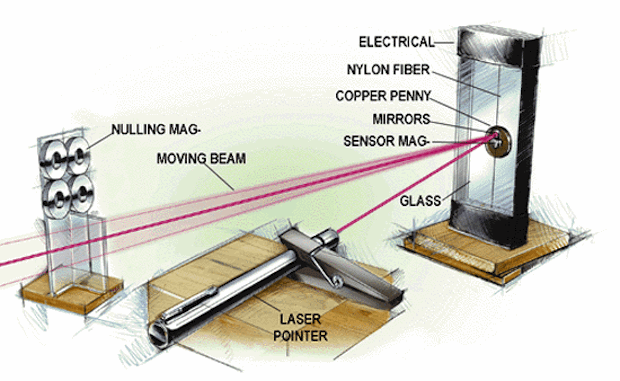According to NASA, there’s a good chance we are in the midst of a significant solar storm. It happens during a coronal mass ejection of the sun and sends billions of tons of particles towards earth. The storm can disrupt GPS, satellite signals, and other electronic systems.
There is a simple way to detect these particles — by building a homemade magnetometer. We covered it in MAKE Volume 8, but here’s a recap given the timeliness of the event.
What you need to do is sandwich a thin nylon thread between two neodymium magnets and suspend them vertically. A penny stuck to the back prevents disturbances due to phenomena such as eddy currents. On the front side a small mirror is attached. A common laser pointer is aimed at the mirror and bounced onto a wall, amplifying any movement from the magnetic storm.
Another key part of this setup is an array of nulling magnets. They’re four of the doughnut-shaped kind, mounted vertically and with their fields all facing the same way. Move the nulling array slowly towards the suspended magnet. At the instant the suspended magnet starts to turn, they are close enough to have cancelled out the earth’s magnetic field.
When a solar storm comes, the laser pointer can drift as much as thirty centimeters. You might notice other things happening too, like the laser point changing position when a car parks in your driveway. When the car leaves, the laser point will return to its original spot. Warnings of solar storms happen quickly, so you might not have time to set it up this time around, but now you’ll be prepared for the next one.
For more detailed instructions, check out this tutorial on root’s site.
ADVERTISEMENT
Join Make: Community Today











